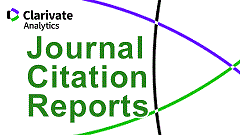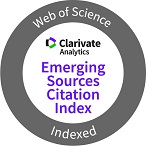Regulación del medio ambiente y competitividad
DOI:
https://doi.org/10.46631/jefas.1999.n9-10.03Keywords:
líderes de negociosAbstract
Existe una creciente preocupación entre gran número de líderes de negocios y autoridades responsables de la elaboración de políticas con relación al hecho que la promulgación de regulaciones locales estrictas sobre el medio ambiente podría afectar la capacidad de las empresas para competir en el extranjero. La confluencia de la globalización de la economía, por un lado, y de los estándares ambientales diferentes, por otro lado, ha motivado esta preocupación. La globalización de la economía mundial ha generado mayor competencia y menores márgenes de ganancia en muchas industrias.
Downloads
References
BARBERA, Anthony J. and MCCONNELL, Virginia D. 1990. “The impact of environmental regulations on industry productivity: Direct and indirecteffects” J. Environ. Econ. Manage. Jan, vol. 18, n* 1, p. 50-65.
DENISON, Edward EF. 1979. Accounting for slower economic growth: The US in the 1970s. Washington, DC., Brookings Institution.
GRAY, Wayne B. 1987 “The cost of regulations: OSHA, EPA, and the productivity slowdown”. Amer. Econ. Rev. Dec., vol. 77, n* 5, p. 998-1006.
GROSSMAN, Gene M. and KRUEGER Alan B. 1993. “Environmental impacts of a North American freed trade agreement”. In: Peter Garber (Ed.). The US-Mexico
Free Trade Agreement. Cambridge, MA, MIT Press, p. 13-56.
HETTIGE, Hemamala; LUCAS, Robert E.B. and WHEELER, David. 1992. “The toxic intensity of industrial production: Global patterns, trends, and trade policy”. AEA
papers and proceedings Amer. Econ. Review. May, vol 82, n* 2.
INTERNATIONAL FINANCE CORPORATION (1FC). 1992. fnvesting in the environment. Washington, DC, International Finance Corporation.
JAFFE, Adam B. and PALMER, Karen L. 1994. Environmental regulation and innovation: A panel data study. Paper prepared for the Western Economic Association Meeting, jun.
JAFFE, Adam B.; PETERSON, Stephen R.; PORTNEY, PaulR. and STAVENS, Robert N. 1995. “Environmental regulation and the competitiveness of US manufacturing: What does the evidence tell US?”. /: Econ. Lit. March, vol. 33, p. 132-163.
JORGENSON, Dale W. and WILCOXEN, Peter J. 1990. “Environmental regulation and US economic growth”. Rand J. Econ. Summer, vol. 21, n* 2, p. 314-340.
=——. 1992. “Impact of environmental legislation on US economic growth, investment, and capital costs”. In: Donna L. Brodsky (Ed.). US environmental policy and economic growth: How do we fare? Washington, DC, American Council for Capital Formation.
KALT, Joseph P. 1988. “The impact of domestic environmental regulatory policieson US international competitiveness”. In: A. Michael Spence
and Healther A. Hazard (Eds.) International competitiveness. Cambridge, MA, Harper and Row, Ballinger, p. 221-262.
LANJOUW, Jean and MODY, Ashoka. 1993. “Stimulating innovation and the international diffusion of environmentally responsive technology: The role of expenditures and institutions. Mimeo, The World Bank.
LOW, Patrick and YEATS, Alexander. 1992. “Do “dirty” industries migrate?” In: International trade and the environment. Washington, DC, The World Bank.
MCGUIRE, Martin €. 1982. “Regulation, factor rewards, and international trade”. ./. Public Econ. Apr., vol. 17, n* 3, p. 335- 354.
MEYER, Stephen M. 1993. Environmentalism and economic prosperity: testing the environmental impact hypothesis. MIT, Mimeo, 1992, Cambridge, MA, updated 1993.
ORGANIZATION FOR ECONOMIC COOPERATION ANDDEVELOPMENT (OECD). 1993. Environmental policies and industrial competitiveness. — Paris,
OECD.
PETHIG, Rudiger. 1975. “Pollution, welfare, and environmental policy in the theory of comparative advantage”. J. Environ. Econ. Manage. N" 2, p. 160-69.
PORTER, Michael E. 1990. The competitive advantage of nations. New York, Free Press.
——. 1991. “America's green strategy”. Sci. Amer. Apr. p. 168.
PORTER, Michael E. with LINDE van der, Claas. 1994. “Towards a new conception
of the environment-competitiveness relationship”. Draft paper, march.
REPETTO, Robert. 1995. “Jobs, competitiveness, and environmental regulation: What are the real issues?”. World Resources Institute, March.
REPETTO, Robert; ROTHMAN, Dale; FAETH, Paul and AUSTIN, Duncan. 1996.
“Has environmental protection really reduced productivity growth? We need unbiased measures”. World Resources Institute, October.
SCHMIDHEINY, S. with the BUSINESS COUNCIL FOR SUSTAINABLE DEVELOPMENT. 1992. Changing course: A global business perspective on development and the environment Cambridge, MA, The MIT Press.
SIEBET, Horst. 1977. “Environmental quality and the gains from trade”. Kyklos. Vol. 30, n 4, p. 657-73.
TOBEY, James A. 1990. “The effects of domestic environmental policies on patterns of world trade: An empical test”. Kyklos. Vol. 43, n” 2, p. 191-209.
USEPA. 1993. International trade in enviromental protection equipment. Washington, DC, US Environmental Protection
Agency.
WHEELER, David and MODY, Ashoka. 1992. “International investment location
decisions: The case of US firms”. J. [nt. Econ. Aug., vol. 33, n* 1,2, p. 57-76.
WORLD ECONOMIC FORUM. 1996. The Global Competitiveness Report 1996.
Geneva, Switzerland, The W orld Economic Forum.
Downloads
Published
How to Cite
Issue
Section
License
Copyright (c) 1999 Journal of Economics, Finance and Administrative Science

This work is licensed under a Creative Commons Attribution 4.0 International License.











